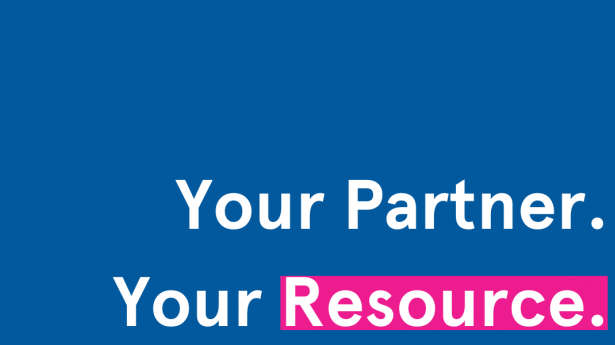
January 2025 Newsletter
A Note from Joe
Preparing for 2025!

We hope your 2025 is off to a great start! Your clients (and you!) may still be recovering from a hectic end to 2024, but don’t let that stop you from helping families get a jump on their charitable planning for 2025.
As compelling as year-end giving may be, perhaps even more compelling are the reasons for planning and launching a charitable giving strategy early in the year – even in January. We're listing our top 10 planning strategies for 2025 below! Stay tuned for our new case study series where we'll do a deep dive into each strategy and study a case surrounding it.
Your January Content
January means it’s time for clients to visit their goals and discuss planning ideas for the year ahead. We believe philanthropy plays an important role in that process. Not all clients are charitably minded, however, you’d be surprised how many are and welcome ideas from their advisors, in fact, they expect charitable strategies to be discussed to ensure their charitable giving goals and tax-planning goals are achieved. Our team at Gulf Coast is committed to being your partner in developing strategies that meet your client’s needs.
Here are Gulf Coast’s top ten planning strategies for 2025.
1. Gifting Highly Appreciated Stocks into a Donor-Advised Fund (DAF): Leverage the stock market highs by establishing a DAF with highly appreciated securities. This provides an immediate charitable tax deduction, avoids capital gains tax, and has the flexibility to grant funds over time, whether in a short period or across generations.
2. Utilizing a DAF for Bunching Contributions: If you’re unable to fully deduct your charitable gifts due to the higher standard deduction, consider “bunching” contributions into your DAF for multiple years. This allows you to itemize deductions now while utilizing your DAF to distribute grants later ensuring you never lose your charitable deduction again.
3. Gifting Appreciated Non-Cash Assets: Donate appreciated real estate, business interests, or other assets to a DAF, Scholarship, Field of Interest or another fund that meets your needs at Gulf Coast. This strategy helps reduce capital gains tax while allowing you to claim a charitable deduction for the fair market value, enabling impactful giving for your favorite causes or setting up a family fund for generational granting.
4. Qualified Charitable Distributions (QCDs): For those aged 70½ or older, make direct donations from your IRA to qualified charitable funds, i.e. designated funds, scholarships, agency funds or one of Gulf Coast Initiative Funds. QCDs can satisfy the required minimum distributions (RMDs) while reducing your taxable income. For 2025, the limit is $108,000 per person—up to $216,000 for couples with IRAs.
5. Qualified Charitable Distributions (QCDs) to establish a Charitable Gift Annuity (CGA): With the Secure Act 2.0 now in effect, donors have the opportunity to transfer up to $54,000 in 2025 from their IRA to establish a Charitable Gift Annuity (CGA). This one-time transfer is an excellent strategy to avoid current income taxation while simultaneously supporting a charity of your choice once the annuity matures.
6. Turning Cryptocurrency Into Gifts: With the rise of digital assets, consider donating cryptocurrency directly to charities or a DAF to avoid capital gains taxes. Gulf Coast is positioned to accept over 70 different types of cryptocurrency gifts, allowing you to support your valued causes and charities.
7. Charitable Remainder Trusts (CRT) for Liquidity Events: For those selling a business or other appreciated assets, such as real estate, collections or even a herd of cattle, a CRT allows you to donate part or all of the asset, sidestepping immediate capital gains tax and providing an income stream for life or a specified period not to exceed 20 years, with the remainder benefiting your chosen charity or fund at Gulf Coast.
8. Charitable Gift Annuities (CGA): Establish a CGA for a reliable income stream for yourself or a loved one while supporting charity. This is a great strategy for those with maturing commercial annuities. By establishing a CGA you can take the charitable deduction to offset the capital gains and still receive income for life. The beauty of this strategy is that CGAs have no age limit for underwriting.
9. Testamentary Retirement Planning with Charitable Remainder Trusts (CRT): Name a CRT as the beneficiary of a retirement plan for the benefit of heirs. Since the Secure Act eliminated the stretch IRA, this strategy allows you to provide an income stream to one or more beneficiary’s (sometimes can be limited to 20 years), provide a charitable deduction to the estate if needed, and the remainder or balance of the trust will benefit charity after the last living beneficiary has passed. This is a win-win for those looking to provide for family and charity in the most efficient way.
10. Grantor Charitable Lead Trust for After the Fact Liquidity Events: If you are looking for a charitable deduction to offset a tax liability but aren’t thrilled about an outright gift, consider a Grantor CLT. This option will produce an immediate charitable deduction whereas you can choose all variables for the trust; payout rate, length of term and value contributed to the trust. At the end of the term the balance of the trust reverts back to you.
By utilizing these charitable planning opportunities, you can enhance philanthropic strategies for your clients in 2025. Gulf Coast is here to answer any questions or assist with illustrations related to these strategies. Together, let’s build a strong legacy of giving!
|
TRENDING THIS MONTH Every attorney, CPA, and financial advisor wants clients to be happy! Did you know that talking about charitable giving can help make that happen? Consider the team at the Gulf Coast to be an extension of your team to help structure charitable giving plans that meet your clients’ philanthropic goals, giving everyone a lot to smile about. |

The Legislative Menu + Charitable Giving
We all know that the new year and a new administration brings lots of potential change. So, what is going on that you need to know to serve your charitable clients?
At the top of the list of issues we’re watching is what might happen with the Tax Cuts and Jobs Act (TCJA) of 2017. As a quick refresher, the TCJA introduced several changes that significantly impacted charitable giving in the United States. These changes are set to expire at the end of 2025, and their potential extension factors into charitable planning techniques.
You’ll no doubt recall that the TCJA lowered individual income tax rates across the board, which in turn decreased the tax savings for each dollar donated, making charitable contributions slightly less attractive from a tax perspective. What’s more, TCJA provisions nearly doubled the standard deduction. (In 2025, the standard deduction is $15,000 for single filers and $30,000 for a married couple filing jointly.) This increase led to a dramatic reduction in the number of taxpayers who itemized their deductions. As a result, fewer taxpayers could claim charitable deductions, potentially discouraging giving among those who previously itemized. Indeed, research estimated that U.S. charitable giving fell by about $20 billion in 2018, the first year the TCJA was in effect.
In addition, the TCJA roughly doubled the estate tax exemption, which has reached $13.99 million per person for 2025. The higher exemption has diluted purely tax-driven motivations for charitable giving among your wealthy clients. With fewer estates subject to tax, many advisors are working with a smaller pool of clients for whom charitable bequests are a useful technique for reducing taxable estates.
Naturally, tax policy plays a role in your clients’ charitable giving behaviors, and certainly the giving behaviors following TCJA reflected tax policy’s influence. Nevertheless, studies have shown that most donors are motivated by factors other than saving taxes. Reasons for giving include a sense of duty to give back to society, a desire to tackle inequality, personal passion for specific charitable causes, religious beliefs, and dedication to supporting those less fortunate. Your clients who give to charity benefit emotionally from their gifts, and of course they like knowing that they are helping others and strengthening community ties. While tax benefits certainly are part of a client’s decision-making process, they’re likely a secondary consideration rather than the primary reason for giving. Indeed, even with tax benefits, your client will always end up with less money after making a charitable contribution, signaling that financial gain is not the main driver of philanthropy. Keep this in mind as tax developments unfold.
Despite the many unknowns, what we do know is that something will happen in 2025 that influences charitable planning. Although TJCA provisions are set to expire at the end of 2025, it’s too soon to determine exactly how you should advise your clients about their charitable planning strategies. Note three potential outcomes of tax policy developments this year:
1. If lawmakers extend the current TJCA provisions, existing patterns of charitable giving are likely to continue, with a potentially continued reduction in overall donations due to the higher standard deduction and estate tax incentives that motivate only ultra-affluent clients.
2. If the TCJA’s provisions expire without replacement, and the tax code reverts back to pre-TJCA rules, it could lead to an increase in charitable giving as more taxpayers return to itemizing deductions and face higher marginal tax rates. Plus, a lower estate tax exemption would create a strong incentive for more of your clients to pursue lifetime and legacy gifts to charity to reduce taxable estates.
3. New tax legislation could introduce different incentives for charitable giving. For example, the proposed Charitable Act aims to create a universal charitable deduction, which could encourage giving across all income levels. For an uplifting read that includes compelling points about the role of the nonprofit sector and the history of charitable giving, check out this letter that was issued late last year to congressional leaders urging them to enact a charitable deduction for taxpayers who do not itemize.
Of course, we’ll keep you posted! In the meantime, please reach out to strategize about individual client situations. The team at Gulf Coast is here to help you structure charitable plans to empower clients to achieve their philanthropic goals, with or without a tax deduction.

Come on get Happy: Talking About Charitable Giving
Over the years, more than a handful of attorneys, CPAs, and financial advisors have shared with the Gulf Coast team that their happiest clients seem to be those who’ve incorporated charitable giving into their estate and financial plans. Whether or not you believe this phenomenon is a “chicken or the egg” dilemma, it’s hard to dispute that philanthropy offers both emotional and rational upsides to your clients. Advisors who lean into these benefits stand a strong chance of being viewed by their clients as effective, impactful, and delivering well-rounded services to improve clients’ lives and give them peace of mind.
Despite these advantages, many advisors lack confidence in discussing philanthropy with clients. A survey found that only 5% of advisors felt "very confident" in this area, with 72% not including philanthropy in their initial fact-finding conversation with clients. This gap represents a significant opportunity for advisors to enhance their services and strengthen client relationships through philanthropic discussions.
Keeping clients loyal and engaged with your services is just one of many reasons to talk with clients about charitable giving. A recent Wall Street Journal article sheds light on the ways charitable giving can have positive effects on both mental and physical health. Notably, the article makes these points:
- Donating to charity can lead to improved mood, lower blood pressure, and potentially a longer life.
- The act of giving may trigger a release of serotonin and dopamine, hormones associated with happiness, while reducing cortisol levels.
- Brain scientists and economists have conducted studies supporting these health benefits of charitable acts.
- Research suggests that the positive feelings associated with giving may contribute to these health improvements.
The article implies that engaging in charitable activities could be a way to enhance overall well-being, suggesting that generosity might have tangible benefits beyond just helping others.
Of course, not every client will have exactly the same experience with charitable giving, and of course, charitable giving is above all primarily motivated by a client’s desire to help others rather than solely for personal benefit. Still, it’s critical for advisors to be aware of the unique role charitable giving can play in a client’s life.
Gulf Coast is here for you! Please reach out anytime you are working with a client who is charitably-inclined. Our highly-trained, professional staff can help navigate both the tax planning complexities as well as the emotional side of giving to ensure that your clients achieve their financial goals as well as their goals for making a difference.
As always, it is our honor and pleasure to work with you and your clients. Thank you for partnering with Gulf Coast. Happy New Year!
The Positive Effects of Charitable Giving
Your Resource.
As you serve your philanthropic clients, we strive to be your resource and sounding board. Understanding the charitable side of the equation allows us to serve as a secondary source for you as you manage the primary relationship with your clients.
Connect with us anytime! It’s our pleasure to work with you in partnership as you help your clients achieve their charitable giving goals for this year and many years beyond tomorrow.



